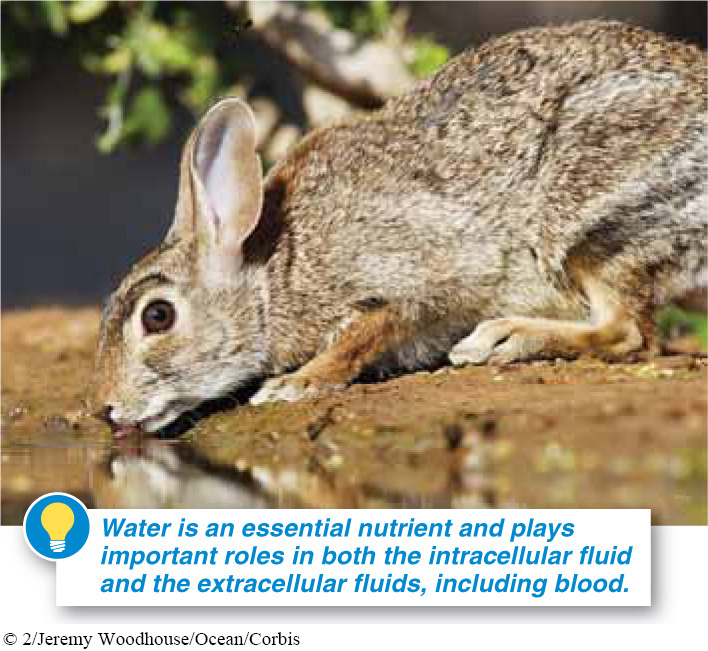
All animals need water to survive. In the early 1900s, an Italian man sentenced to death reportedly volunteered to determine how long he could live without food or water. The fatal “experiment” lasted only 17 days before he died. Water, which is considered an essential nutrient, constitutes about 60% to 65% of the body weight in most mammals. This water plays important roles in both the intracellular fluid and the extracellular fluids, including blood, in humans and other animals (FIGURE 22-6). Water in body fluids serves a variety of critical purposes, all of which can be impaired when the animal becomes dehydrated.

- Water transports nutrients and waste materials throughout the body.
- It takes part in chemical reactions.
- It serves as a solvent for many vitamins and minerals, amino acids, and sugars.
- It lubricates many joints, the spinal cord, and the eyes.
- It helps regulate body temperature.
A person expending about 2,000 kcal/day needs about 2–
879
If water is so important, why are there some desert animals that never need to drink?
Water usage varies among animal species. Tremendous water efficiency has evolved in some desert mammals—
TAKE-HOME MESSAGE 22.4
Water is probably the single most important component of an animal’s diet. It constitutes 60% to 65% of the body weight of most mammals. It transports nutrients and waste materials throughout the body, takes part in metabolic reactions, serves as a solvent, lubricates many body parts, and helps regulate body temperature.
What are the key sources of water in our diet?
Water can be consumed directly as drinking water, but it also is present in many foods and is released as a by-product of many of the body's chemical reactions.